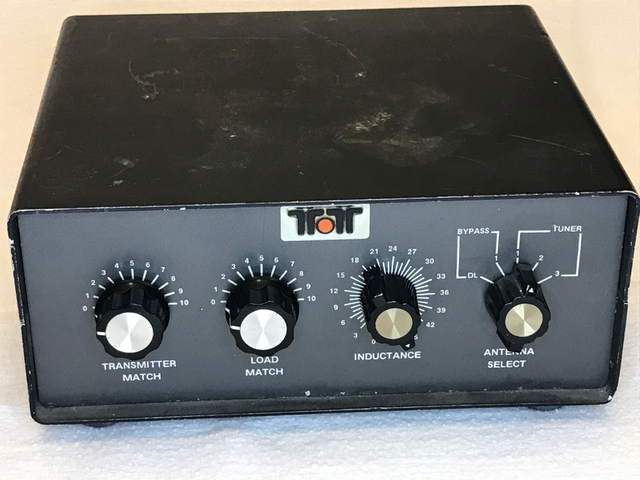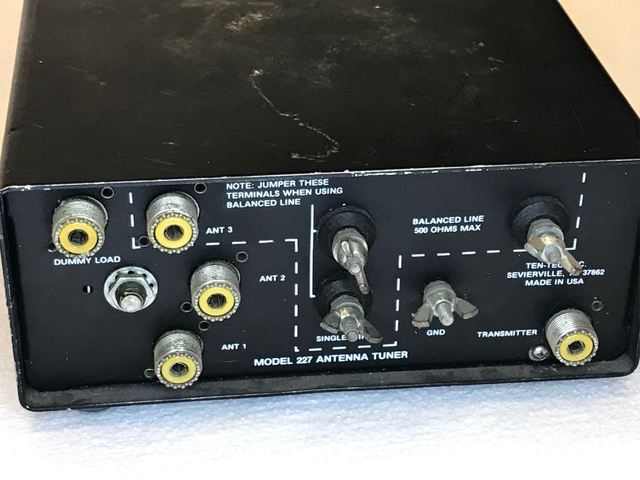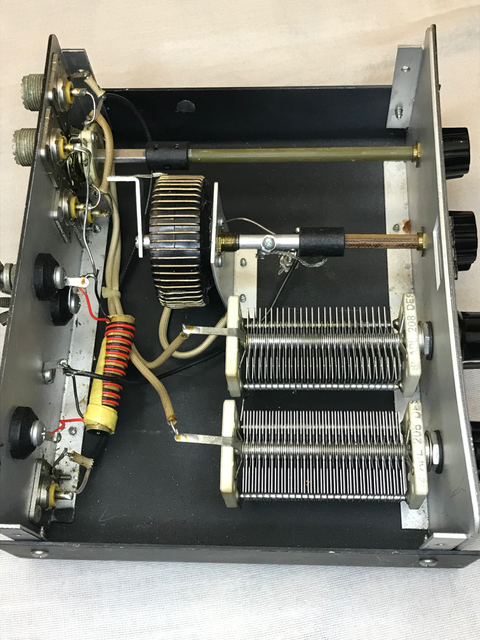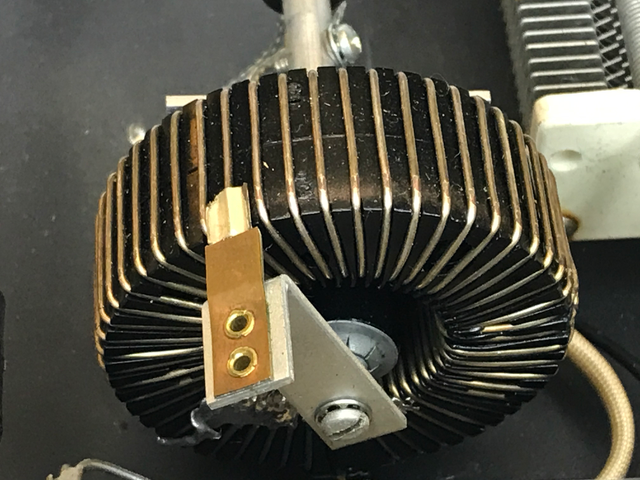TenTec 227 antenna tuner
last updated 2 January 2022
The Ten-Tec 227 antenna tuner was produced in the early 1980s to match the Argosy 525 transceiver, although it can be used with any radio. It is reasonably compact, and uses a unique switched coil in a T-match circuit.

There are 3 switchable outputs, one with a terminal for a single wire, but only one of them (plus a port for a dummy load) can be switched straight-through. It also had a conventional built-in 4 : 1 voltage balun, although that had been replaced in this unit before I got it.

The capacitors are the “standard” 206 pF, as used in many other tuners of this type. What is most interesting, however is the switched coil.

The coil is wound on a toroid form (plastic?), with a wiper that moves around it to contact each turn, very much like a potentiometer or rheostat.

This gives 45 steps of inductance, most than almost any other rotary switch can manage, allowing better adjustment. However, the coil appears to be a weak link in the design. I had to repair a broken turn on this coil, and there are several other signs of overheating, as well as some solders splotches that may be shorting out turns. I measured the inductance as 23 uH, although it may change if there are shorted turns that can be repaired. It is possible to position the wiper so that it contacts two adjacent turns and shorts them out, although that is not the natural resting place of the switch.
One quirk is that the flat on the shaft for the coil doesn’t line the knob up properly with the scale, so one of my settings used “-3 turns” of the coil. There may be a fix for this, but that will wait until I remove the coil for closer inspection of the extra solder, etc. Otherwise, the ease of switching the coil taps made this a convenient tuner to use
In my tuner efficiency test, for those particular load impedances it was the best of the group on 30m and better than most other T-matches on 20m, but wasn’t much better than average on the other bands, and couldn’t get a match on 80m. Clearly coil heating has been a problem for a prior owner, but it is impossible to know just why.